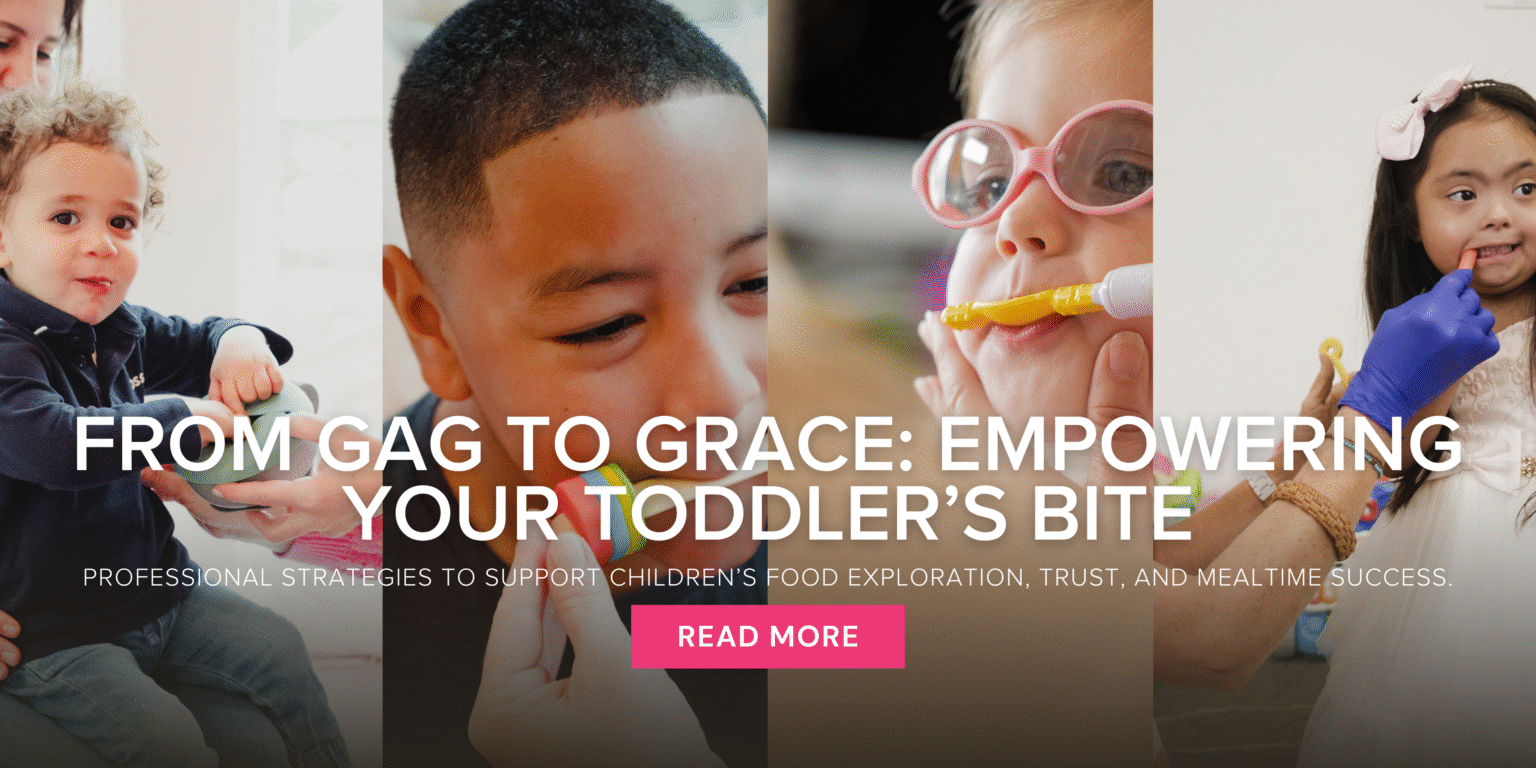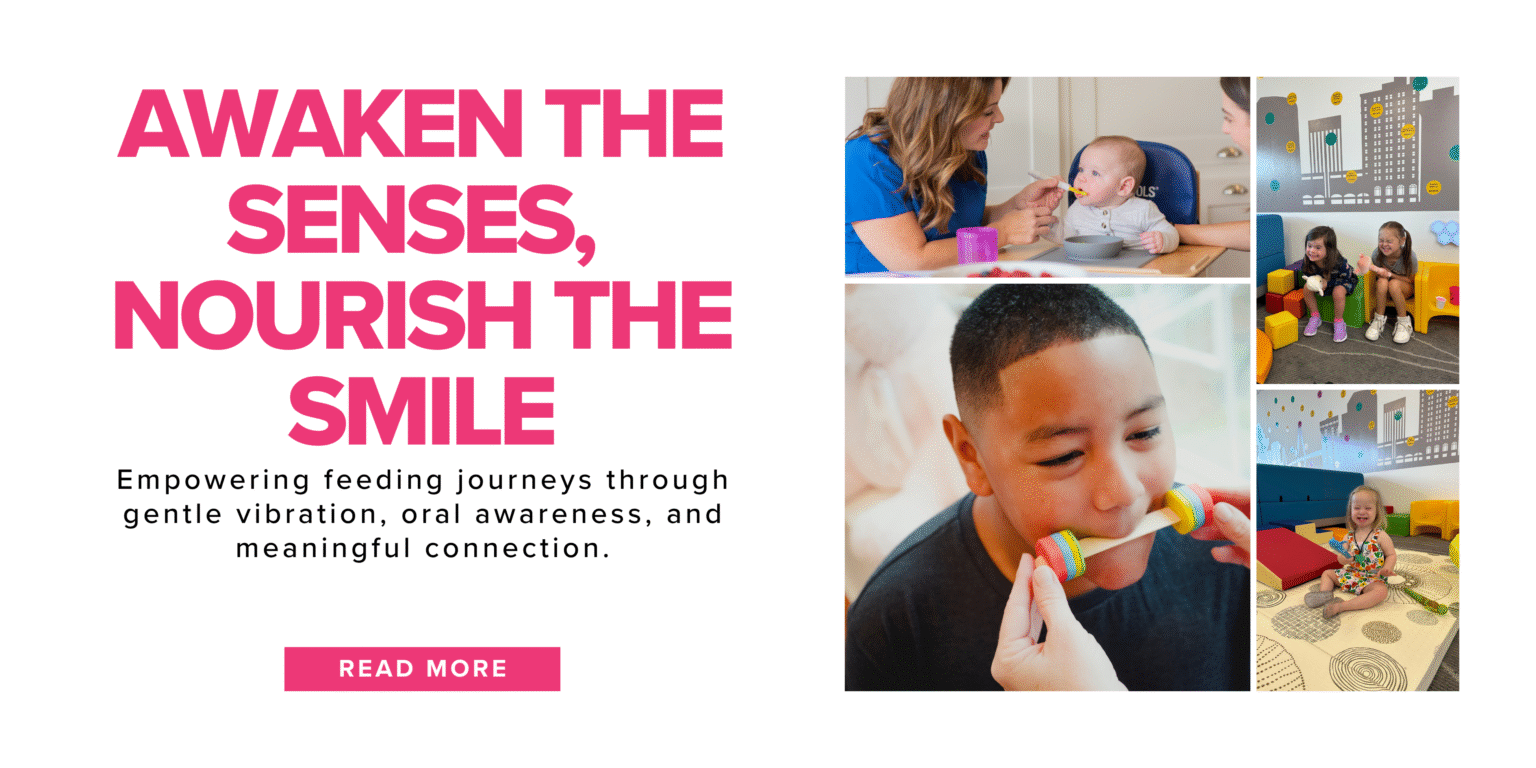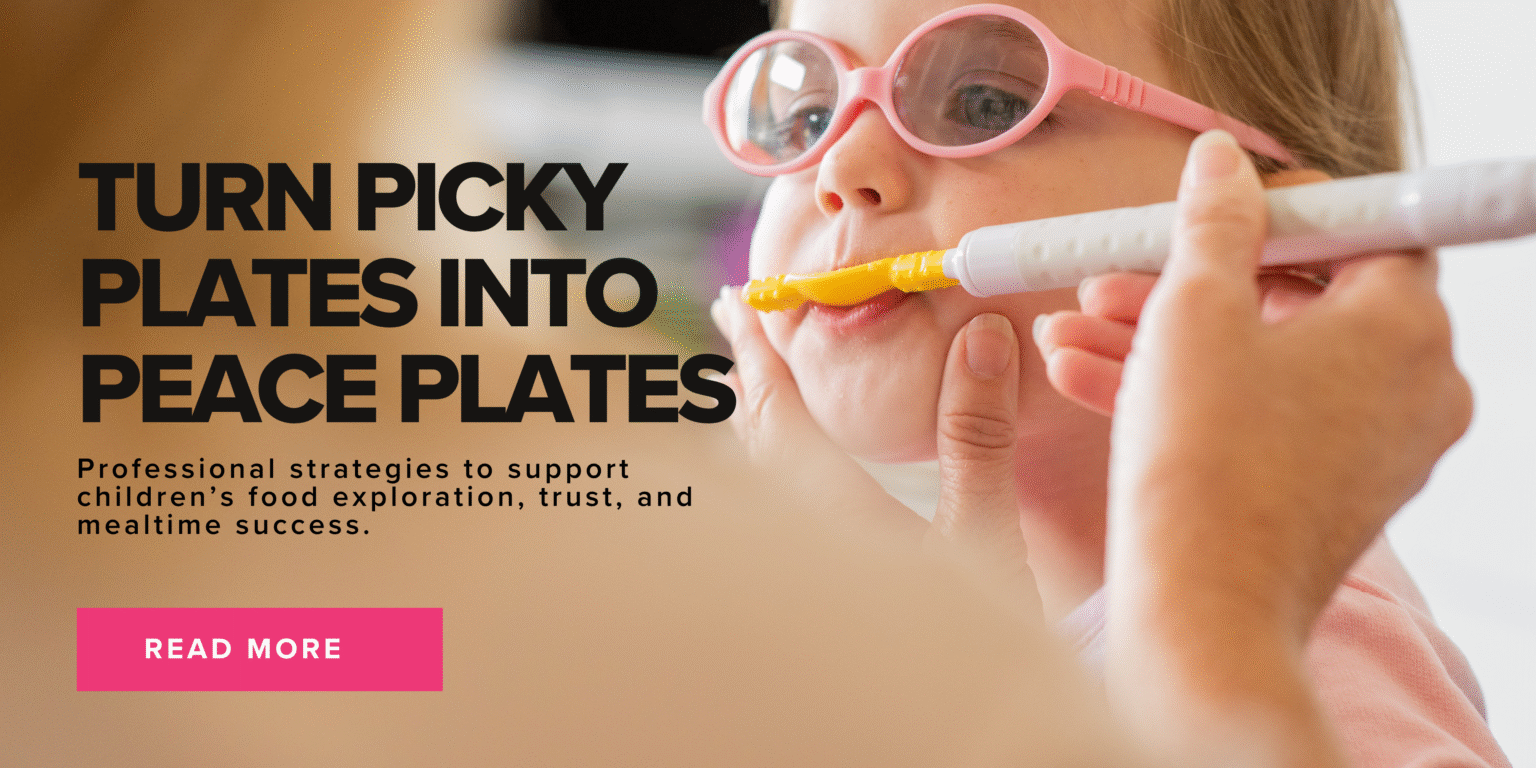Good news! The American Academy of Private Practice in Speech Pathology and Audiology (AAPPSPA) has accepted a position statement TalkTools® Instructor Robyn Merkel-Walsh proposed on Oral Motor Therapy.
American Academy of Private Practice in Speech Pathology and Audiology (AAPPSPA) Position Statement – Oral-motor Therapy
Originally posted on AAPPSPA website.
By Robyn Merkel-Walsh, MA, CCC-SLP
Foreword:
In order to investigate Evidenced Based Practice in regards to oral-motor therapy, an AAPPSPA committee was formed. This Position Statement was written with input and editing from: Susan Arnold MS, CCC-SLP , Kaye Baumgardner MS, CCC-SLP/COM, Mary Billings MS, CCC-SLP/COM, Amanda Chastain MA, CCC-SLP, COM and Denise Dougherty MA, CCC-SLP.
Abstract:
The American Academy of Private Practice in Speech Pathology and Audiology (AAPPSPA) is a non-profit organization of speech and language pathologists (SLP) and audiologists who work in the private sector. Members of AAPPSPA foster the highest ideals and principles of private practice in speech pathology and audiology(AAPPSPA, 2015). Due to the continued controversy surrounding oral-motor therapy, the AAPPSPA board found it necessary to investigate this topic and forge a position statement. This position statement explores 1) defining Non-Speech Oral-Motor Exercises (NSOME), 2) defining Oral Placement Therapy (OPT), 3) understanding the difference between NSOME and OPT, 4) clinical implications for Evidenced Based Practice (EBP).
Discussion:
By analyzing AAPPSPA discussions, it is noted that many therapists in our organization supplement phonological and traditional models with oral-motor activities to help the patient achieve placement cues, especially for those individuals with muscle-based and motor-based diagnoses. Discussions involving NSOME, Myofunctional therapy, feeding and OPT can be frequently found in list-serve discussions. It was also noted, that not all AAPPSPA members were in support of oral-motor therapy due to lack of EBP; therefore this topic required further review. Clinicians who are a member of AAPPSPA must use EBP to decide if they want to reject the use of oral-motor and OPT based on the evidence, or look into the most appropriate treatment parameters based on the recipient of the treatment, and the diagnosis (Clark, 2005).
The ongoing question is whether or not oral-motor therapy is evidenced based. EBP according to the American Speech and Hearing Association is the integration of best research evidence with clinical expertise and patient values (ASHA, 2005). There is a misconception that EBP is limited to double-blind studies when in fact EBP is very centered on valuing feedback from the individual receiving treatment, and the clinical data collected in therapy. Not every method in the field of speech pathology has a large sampled, double blind study. For example, there is no proof that using a mirror aides in articulation therapy, but many therapists and patients report the value of mirror use when learning to imitate speech sounds. In addition, a single study can prove, that another study is not valuable. No single study has proven that oral-motor, OPT or Myofunctional therapy is an invalid or unethical therapy method.
Over the past decade, there has been an ongoing debate, through secondary research studies between those who do not support the use of Non-Speech Oral-motor Exercises (NSOME) (Bowen, 2005; Bowen , 2013; Lof, 2006; Lof, 2007; Lof, 2009 ), and those who support the use of Oral Placement Therapy (OPT) (Bathel, 2007; Bahr, 2008; Bahr & Johnson, 2010; Marshalla, 2007). Neither camp has large sampled double-blind studies to support their case; however, both sides of the debate have supported their hypothesis via secondary research such as literature review and surveys (Lof & Watson, 2005; Bahr, 2011.)
Oral-motor therapy is an umbrella term that leads to confusion (Bahr & Rosenfeld-Johnson, 2010.) Pre-feeding exercises, NSOME, Myofunctional therapy, strengthening exercises, swallowing exercises, oral imitation tasks and the use of oral speech tools were all being associated with the term oral-motor therapy (Marshalla, 2007). Thus far, there is no debate in the field of speech-language pathology that oral-motor exercises can prove positive results on disorders of feeding.
The term oral-motor therapy is in fact the appropriate term to describe exercises to strengthen the musculature, and regulate sensory-motor dysfunction for individuals who present with oral phase feeding disorders. This may include but is not limited to: dysarthria, Moebius syndrome, Down syndrome, Cerebral palsy, and Orofacial Myofunctional Disorders (OMD). SLPs involved in the treatment of oral-phase feeding disorders, have evidenced based support from sources such as: The International Journal of Orofacial Myology and the ASHA SIG13 committee publication Perspectives on Swallowing and Swallowing Disorders (Dysphagia). Numerous research articles have been dedicated to the use of oral-motor therapy in respect to the oral phase of feeding. In particular the relevance of oral sensory-motor function has been documented in the literature (Overland, 2010).
Over thirty-five years ago, the International Association of Orofacial Myology (IAOM) was formed, and has addressed the need for regulated educational opportunities and standardized college level credentialing of therapists to treat Orofacial Myofunctional Disorders (OMD) (Snow, 2015). Experts in Myofunctional therapy understand the connection between the airway, dentition and tongue posture, swallowing, and speech clarity. The Myofunctional Clinic of Bellevue has compiled an excellent list of EBP to support the use of Myofunctional therapy with a variety of individuals (Bellevue, 2015). Gommerman & Hodge produced a study analyzing the effectiveness of Myofunctional therapy and sibilant production and found that articulation therapy was achievable in only four therapy sessions after a tongue-thrust disorder was remediated in Myofunctional therapy (Gommerman & Hodge, 1995).
Clinicians, who represent the Board of Directors for the Oral-Motor Institute, have struggled with distinguishing oral-motor therapy, from the form of NSOME presented by Dr. Gregory Lof (Lof, 2008). The controversy in the field was causing much confusion; therefore, the term Oral Placement Disorder was coined by Diane Bahr and Sara Rosenfeld-Johnson in 2010 (Bahr & Rosenfeld-Johnson, 2010). The two practicing clinicians wanted to define that the therapeutic techniques being used to support speech sound productions were not the same types of activities that were suggested in the current literature, such as puffing air in the cheeks or tongue wagging (Lof, 2008). There is some misconception that speech-language pathologists (SLPs) who work on oral-motor issues, are not working on speech, and this is not the case (Merkel-Walsh & Bahr, 2014).
OPT, which is a form of tactile intervention, is used to create the standard placement for the targeted speech sound and is then immediately transitioned into direct work on that targeted speech sound (Marshalla, 2007). The major difference between NSOME and OPT noted, was that NSOME are movements which are not related to speech sounds, while OPT therapy only includes speech-like movements (Bahr & Rosenfeld-Johnson, 2010). OPT follows the principles of Van Riper’s Phonetic Placement Therapy (PPT), and uses tactile cueing to help individuals who cannot respond to visual-verbal treatment cues (Marshalla, 2008). Children with Oral Placement Disorders (OPD) cannot imitate targeted speech sounds using auditory and visual stimuli (ex. look, listen, and say what I say). They also cannot follow specific instructions to produce targeted speech sounds (e.g. put your lips together and say /m/). Although the term Oral Placement Disorder is new, the concepts surrounding the term have been discussed by a number of authors and clinicians (Green, Moore & Reilly, 2000; Pannbacker & Lass, 2002; Polmanteer & Fields, 2002; Pruett-Hayes, 2005).
Despite this clarification in 2010, there have been continued questions, and persistent confusion, as to what constitutes a NSOME, versus what is an OPT technique (Bahr & Rosenfeld-Johnson 2010). OPT is a tactile teaching technique used for children and adults with Oral Placement Disorders (e.g., dysarthria), who cannot learn standard speech sound production using auditory and visual teaching methods alone. OPT facilitates the pre-requisite skills in muscle control to develop dissociation and grading in the muscles of the abdomen, velum, jaw, lips and tongue for clients who cannot approximate the standard speech sounds using the instructions. If the client can produce standard speech using adequate placement and duration using only auditory and visual cueing, OPT would not be included in that client’s treatment plan (Merkel-Walsh, 2014).
OPT is a modern extension of Phonetic Placement Therapy (Van Riper, 1954) and The Feedback Model (Mysak, 1971). It is based on a very common sequence (Young and Hawk, 1955; Van Riper, 1978). Gregory Lof’s research has stated that the methods used in Van Riper’s Phonetic Placement Approach, are not in fact considered NSOME (Lof, 2009). Merkel-Walsh and RoyHill (2014) presented this concept at the ASHA Convention:
1) Facilitate speech movement with the assistance of a therapy tool (ex. horn, tongue depressor) or a tactile-kinesthetic facilitation technique (ex. PROMPT facial cue);
2) Facilitate speech movement without the therapy tool and/or tactile-kinesthetic technique (cue fading);
3) Immediately transition movement into speech with and without therapy tools and/or tactile-kinesthetic techniques.
Conclusion:
Based on literature review and analysis of current articles, journal entries, podcasts, texts and monographs, it is determined that it is important to explore current clinical techniques to determine what activities are considered ethical and meaningful to an individual seeking private based speech pathology services. Being both sides of the debate have equal evidence by way of primary and secondary research, it should therefore be AAPPSPA’s position that:
1) Oral-motor therapy is an acceptable treatment method for those individuals who present with disorders of strength and tone, oral-phase feeding deficits and/or Orofacial Myofunctional Disorders. This may include the oral-phase of feeding, oral resting posture, drooling, and overall appearance of the oral-facial musculature. Oral-motor therapy encompasses activities that target the improvement of strength, tone, dissociation and grading of the oral musculature and usually involves regulation of the oral sensorymotor system (Overland, 2010). Oral-motor therapy for strength, tone and the oral-phase of feeding and been accepted in the field without debate.
2) Oral Placement Therapy, a form on Phonetic Placement Therapy, is an acceptable form of treatment methodology for those individuals who do not progress from purely traditional or phonological methodology. The individuals may also present with disorders of muscle strength and tone (OPD), and cannot respond accurately to look at me and say what I say. This therapy utilizes the implementation of therapy tools, in order to provide tactile cues to shape oral placements into speech sound production (Bahr & Rosenfeld-Johnson, 2010; Marshalla, 2007). Once the individual can imitate the sound(s) through traditional methods, direct work on speech sound production should be implemented.
3) The combination of oral-motor therapy and Oral Placement Therapy may be presented concurrently. An individual may present with a comorbid diagnosis (e.g., low tone and an Orofacial Myofunctional Disorder) that requires implementation of both oral-motor and Oral Placement Therapy simultaneously.
4) Myofunctional therapy is an acceptable form of therapy for those patients who present with Orofacial Myofunctional Disorders. These patients may also present with articulation errors that do not resolve with traditional models of therapy. The connection between tongue placement, swallowing, dental alignment and sibilant production has been thoroughly supported by the International Association of Orofacial Myology. Clinical evidence has been documented repeatedly by active Orofacial Myologists to indicate direct correlation between remediation of Orofacial Myofunctional Disorders and persistent speech sound disorders.
References:
American Academy of Private Practice in Speech Pathology and Audiology (AAPPSPA). 2015. Retrieved from : http://www.aappspa.org/.
American Speech-Language-Hearing Association. (2005). Evidence-Based Practice in Communication Disorders [Position Statement]. Available from www.asha.org/policy.
Bathel, J. A. (2007). Current research in the field of oral-motor, muscle-based therapies: response to: Logic, theory and evidence against the use of non-speech oral-motor exercises to change speech sound productions by Gregory Lof. TalkTools, Charleston, SC.
Bahr, D. (2008, November). The oral-motor debate: Where do we go from here? Poster session presented at the annual meeting of the American Speech-Language-Hearing Association, Chicago, IL. Bahr, D., Rosenfeld-Johnson, S. (2010). Treatment of children with speech oral placement disorders (OPDs): a paradigm emerges. Communication Disorders Quarterly, XX(X), 108.
Bahr, D. (2011) . The oral-motor debate part I: understanding the problem. The Oral-Motor Institute. Available from www.oralmotorinstitute.org.
Bowen, C. (2005). What is the evidence for oral-motor therapy? Acquiring Knowledge in Speech, Language and Hearing, Speech Pathology, 7, 3, 144-147.
Bowen, C. (2013). Controversial practices and intervention for children with speech sound disorders. Retrieved from: http://www.speech-language-therapy.com/pdf/nsome2013.pdf
Clark, H. M. (2005). Clinical decision making and oral-motor treatments. The ASHA Leader, pp. 8-9, 34-35.
Gommerman, S. & Hodge, M.M. (1995). Effects of oral Myofunctional therapy on swallowing and sibilant production. International Journal of Orofacial Myology, 21:9-22.
Green, R., Moore, C. A., Reilly, K.J. (2000). The sequential development of jaw and lip control for speech. Journal of Speech, Language and Hearing Research, 45, 66-79.
Klein, E.S. (1996). Phonological/traditional approaches to articulation therapy: a retrospective group comparison. Language, Speech, and Hearing Services in Schools, 27, 314-323.
Lof, G. L., & Watson, M. (2005). Survey of universities ‘teaching: oral-motor exercises and other procedures. Poster presented at the annual meeting of the American Speech Language-Hearing Association, San Diego, CA.
Lof, G.L. (2006). Logic, theory and evidence against the use of non-speech oral-motor exercises to change speech sound productions. Invited presentation at the ASHA Annual Convention, Miami, FL. Nov. 17.
Lof, G.L. (2007). Reasons why non-speech oral-motor exercises should not be used for speech sound disorders. Presentation at the ASHA Annual Convention, Boston, MA. Nov. 17.
Lof, G. L., & Watson, M. (2008). A nationwide survey of non-speech oral-motor exercise use: Implications for evidence-based practice. Language, Speech, and Hearing Services in Schools, 39, 392-407.
Lof, G.L. (2009). Nonspeech oral-motor exercises: an update on the controversy. Presentation at ASHA Annual Convention, New Orleans, LA
Marshalla, P. (2007). Oral-motor techniques are not new. Oral-motor Institute, 1(1). Available from www.oralmotorinstitute.org.
Merkel-Walsh, R. (2015). Conversations in speech pathology. Retrieved from: http://www.conversationsinspeech.com/.
Merkel-Walsh, R. (2014). Oral Placement to speech: transitioning muscle-memory into speech sound production. TalkTools. Charleston, SC.
Merkel-Walsh,R. & Roy-Hill, R. (2014). Using tactile techniques to improve speech clarity in children with childhood apraxia of speech. ASHA Annual Convention, Orlando, FL.
Merkel-Walsh, R. & Bahr, D. (2014). What evidenced based sensory-motor treatments are effective for speech disorders? Retrieved from: http://www.agesandstages.net/qadetail.php?id=31.
Mysak, E. (1971). Speech pathology and feedback therapy. Charles C. Thompson Publisher.
Overland, L. (2010). A sensory-motor approach to feeding. Perspectives on Swallowing and Swallowing Disorders (Dysphagia), 20, 3, 60-64.
Pannbacker, M., & Lass, N. (2002). The use of oral-motor therapy in speech-language pathology. Poster session presented at the annual meeting of the American Speech Language-Hearing Association, Atlanta, GA.
Polmanteer, K., & Fields, D. (2002). Effectiveness of oral-motor techniques in articulation and phonology treatment. Poster session presented at the annual meeting of the American Speech-Language-Hearing Association, Atlanta, GA
Pruett-Hayes, S. (2005). Comparison of two treatments: Oral-motor and traditional articulation treatment. Poster session presented at the annual meeting of the American Speech Language-Hearing Association, San Diego, CA.
Snow, M. (2015, March 13). International Association of Orofacial Myology. Retrieved from IAOM: http://www.iaom.com/history.html
Van Riper, C. (1978). Speech Correction: Principles and Methods (6th Edition). Englewood Cliffs: Prentice-Hall.
Young, E. H., & Hawk, S. S. (1955). Moto-kinesthetic speech training. Stanford, CA: Stanford University Press.



